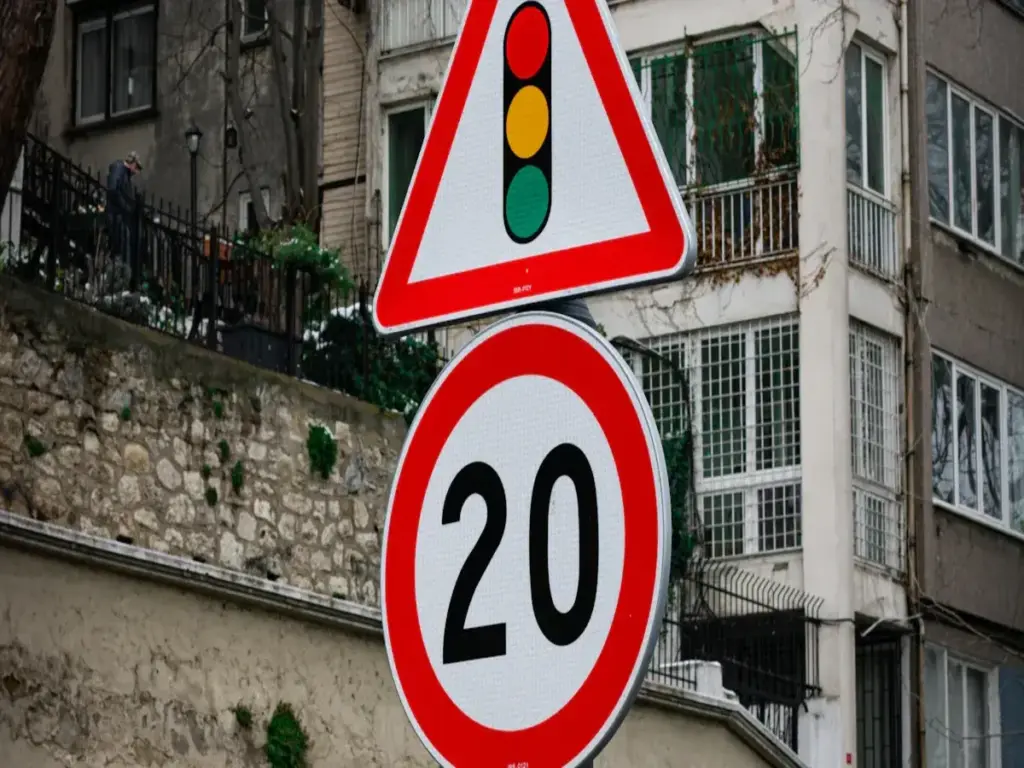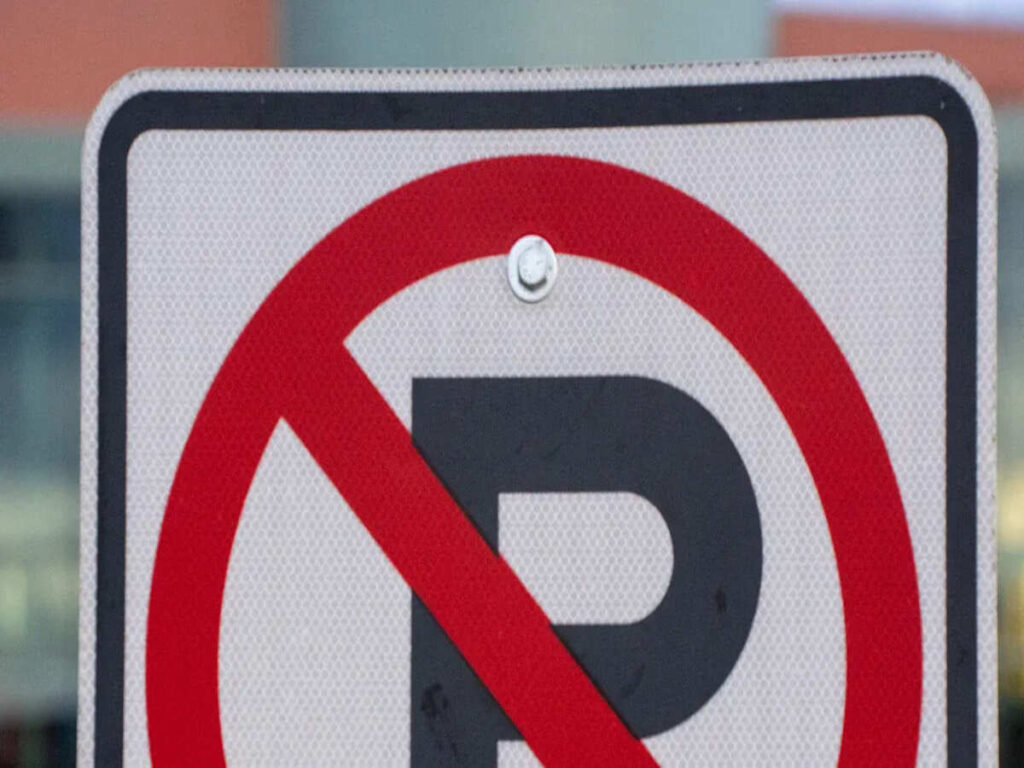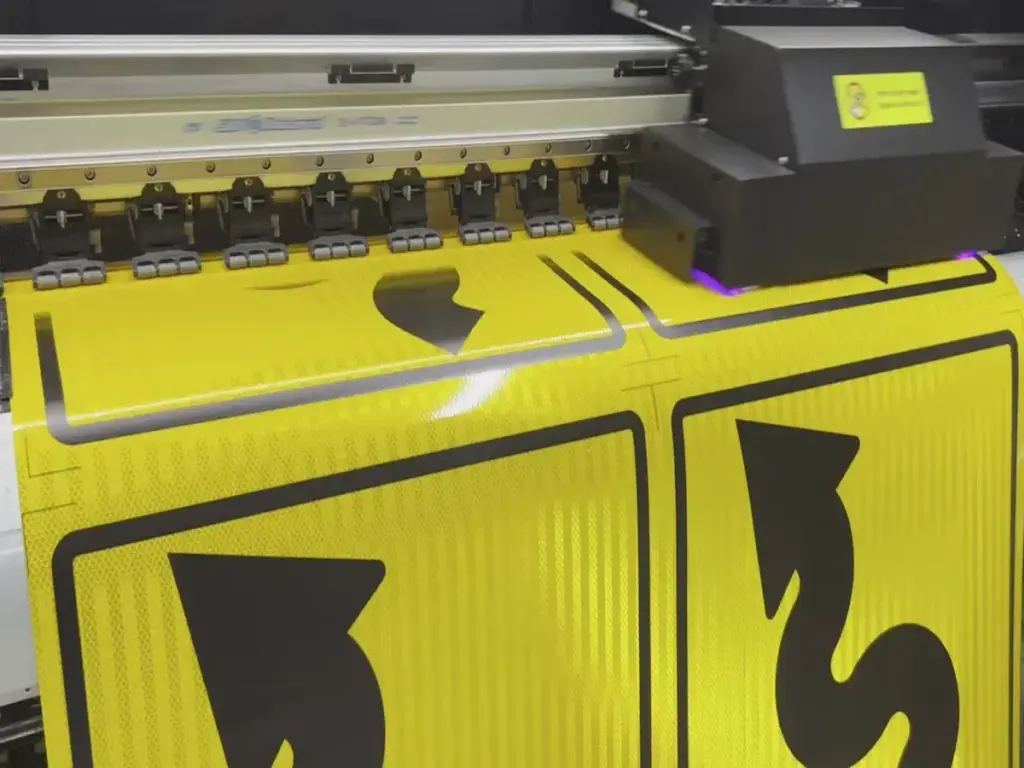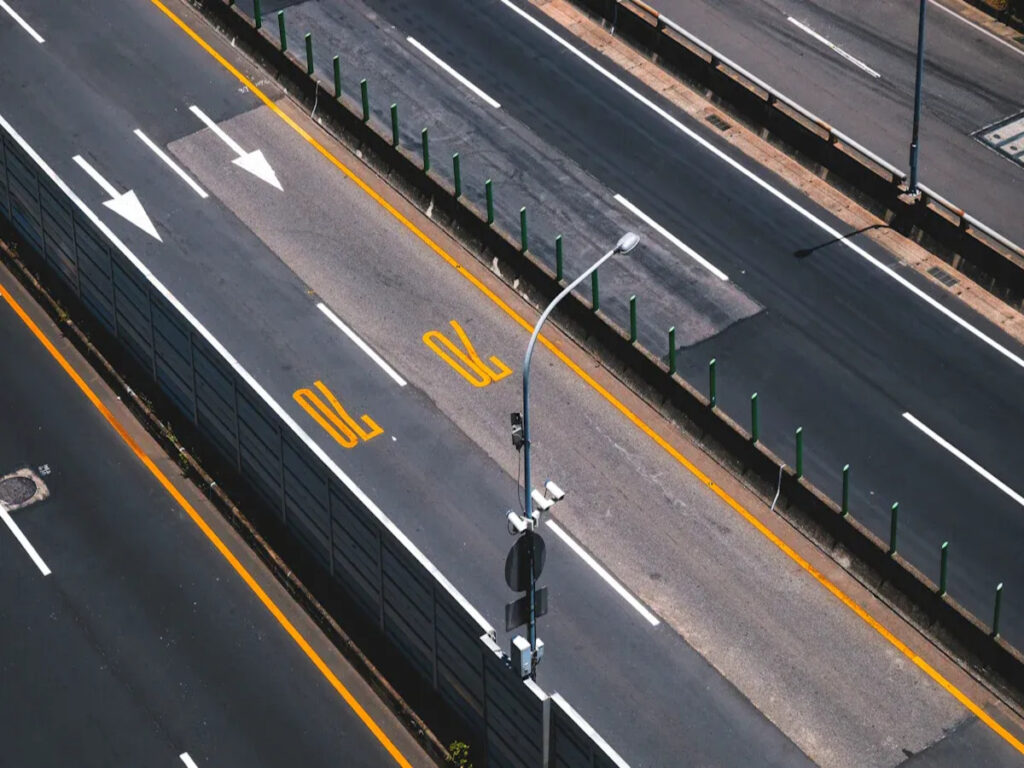
सड़कों को सुरक्षित और यातायात को सुचारू रखने के लिए प्रभावी संकेत महत्वपूर्ण हैं. बहु-संदेश ट्रैफ़िक संकेत गति सीमा या लेन नियम जैसी निश्चित जानकारी दिखाते हैं. वे मजबूत हैं और समय के साथ पैसे बचाते हैं. वीएमएस, या गतिशील संकेत, ड्राइवरों को लाइव अपडेट दें. ये अपडेट ट्रैफ़िक स्थितियों के आधार पर बदलते हैं. यह उन्हें आज की यातायात जरूरतों के लिए बहुत उपयोगी बनाता है.
More people are using dynamic signs now. अमेरिका में।, smart VMS were worth $0.9 अरब में 2024. द्वारा 2033, they might grow to $1.6 अरब, increasing by 8.1% हर साल. Both Multi-Message Traffic Signs and dynamic signs help control traffic, लोगों को सुरक्षित रखें, and share important driver information.
पर ऑप्टट्रैफ़िक, हम दोनों प्रदान करते हैं Multi-Message Traffic Signs और वीएमएस solutions that meet the latest standards and enhance road safety. Explore OPTRAFFIC range of advanced traffic signs today to optimize traffic management and improve driver awareness.
चाबी छीनना
- Multi-Message Traffic Signs show fixed details like speed limits. They are cheap and need little upkeep, good for steady traffic.
- परिवर्तनीय संदेश संकेत (वीएमएस) ड्राइवरों को लाइव अपडेट दें. They change fast with traffic, helping safety and flow in busy spots.
- Picking the right sign depends on traffic needs. Use Multi-Message Signs for steady traffic and VMS for busy places or emergencies.
- VMS can run on solar power, great for faraway areas. This saves energy and helps the environment.
- Both signs are important for traffic control. Using both together makes roads safer and smoother.
Understanding Multi-Message Traffic Signs

Features and Functionality
Multi-message traffic signs give clear and simple information to drivers. These signs show fixed details like speed limits or lane rules. They can also warn about roadwork, all in one spot. Their easy design works well in areas with steady traffic.
These road signs are placed at least 7 feet above roads. This height helps drivers read them from far away. The design follows strict rules, making the messages easy to see and understand. Each sign shows up to three lines of text. Each line can fit eight characters, giving enough space for key details.
Unlike digital signs, these road safety signs don’t need electricity or high-tech tools. This makes them cheap and easy to maintain. They are made from strong materials that handle bad weather. This makes them great for outdoor use over many years.
सामान्य उपयोग के मामले
You’ll see these signs where steady messages are very important. उदाहरण के लिए, they are used in construction zones to show lane closures or slower speed limits. Highways use them for rules like truck lanes or toll details.
In quiet areas, where traffic doesn’t change much, these signs work well. They are also helpful in parking lots to show rules like time limits or reserved spots. Since the message doesn’t change, drivers won’t get confused.
By using these signs, traffic managers keep roads safe and organized. They don’t need to update them often or spend a lot on upkeep.
Exploring VMS (परिवर्तनीय संदेश संकेत)
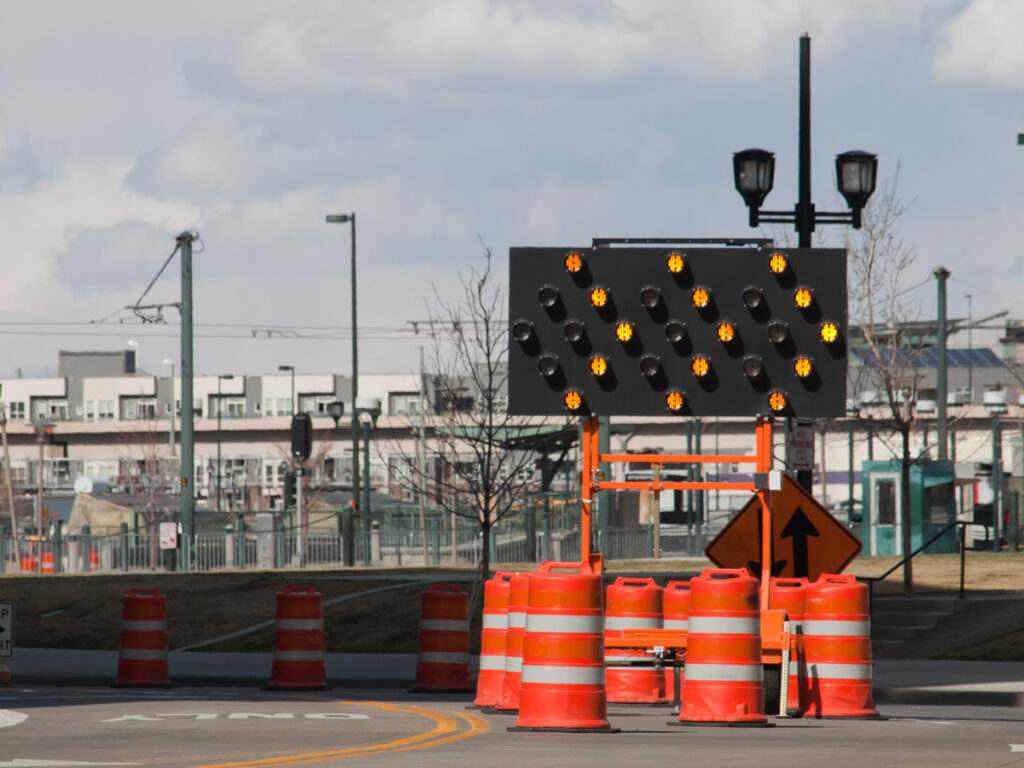
Characteristics and Technology
वीएमएस, or Variable Message Signs, ड्राइवरों को लाइव अपडेट दें. These signs use bright LED lights to show changing messages. They adjust quickly to traffic changes, unlike fixed signs. यह उन्हें आज की यातायात जरूरतों के लिए बहुत उपयोगी बनाता है.
VMS uses digital screens, wireless systems, and traffic sensors. These tools work together to share accurate updates. उदाहरण के लिए, sensors notice traffic jams or crashes. तब, the VMS shows warnings or detour routes. The LED lights make the messages easy to see, खराब मौसम में या रात में भी.
Studies show VMS helps solve modern traffic problems. Research highlights how VMS improves safety and traffic flow by adapting fast. The table below explains key VMS features:
| Key Features of VMS Technology | विवरण |
|---|---|
| अध्ययन फ़ोकस | Looked at VMS design, औजार, and how they work. |
| VMS Purpose | Adjusts quickly to changes and improves traffic systems. |
| VMS Importance | Solves modern traffic challenges effectively. |
Applications in Traffic Management
VMS is important for keeping roads safe and traffic smooth. These signs work well in busy areas, निर्माण क्षेत्र, और आपात स्थिति. उदाहरण के लिए, placing VMS 150-200 meters before exits helps drivers make better choices. Drivers can act quickly with the real-time updates shown.
VMS can be used in many ways. During rush hours, they show traffic updates to help avoid jams. आपात्कालीन स्थिति में, they display warnings like road closures or escape routes. Studies say pictures on VMS work better than just words. This helps drivers understand the message faster.
The table below compares VMS with regular signs:
| विशेषता | LED VMS | नियमित संकेत |
|---|---|---|
| कम दुर्घटना | Big drop in accidents | No live updates |
| चालक प्रतिक्रिया समय | Faster reactions | Fixed information only |
| दृश्यता | देखने में आसान है | Harder to see |
Adding VMS to traffic plans makes roads safer and traffic flow better. These signs give live updates that fixed signs cannot provide.
Comparing Multi-Message Traffic Signs and VMS
Flexibility and Messaging
VMS signs are more flexible than static signs. They can change messages quickly when road conditions change. उदाहरण के लिए, if there’s an accident or bad weather, VMS can show warnings or detours right away. This helps drivers stay safe during busy times or emergencies.
Multi-message traffic signs, तथापि, show fixed messages that don’t change. They are good for steady information like speed limits or lane rules. These signs work well in places where traffic stays the same. They are simple and cost less, making them great for quiet or rural areas.
Visibility and Readability
Both types of signs are easy to see and read. Multi-message signs use bold letters and bright colors. They are placed high, about seven feet above the road, so drivers can see them clearly. Their simple design works well for areas with steady traffic.
VMS signs use bright LED lights, making them visible day or night. They can also show pictures, प्रतीक, or animations. This helps drivers understand messages faster. Studies show that VMS signs help drivers react quicker, which improves safety in busy areas.
लागत और रखरखाव
The costs for these signs are very different. Multi-message signs cost less at first because they don’t need electricity. But updating them later can be expensive. उदाहरण के लिए, a business with 50 locations might spend $7,500 to install static signs but $90,000 each year to update them. Over five years, the total cost would be $457,500.
VMS signs cost more upfront, के बारे में $100,000 के लिए 50 locations. तथापि, they don’t need extra money to update messages, समय के साथ पैसा बचाना. The table below compares the costs:
| लागत कारक | Static Signs | अंकीय संकेत |
|---|---|---|
| प्रारंभिक लागत (50 locations) | $7,500 | $100,000 |
| Annual Update Costs | $90,000 | $0 |
| 5-Year Total Cost | $457,500 | $100,000 |
Maintenance is also different. Multi-message signs need cleaning and replacing when worn out. VMS signs need regular checks for their digital parts and power. Even with these checks, VMS saves money long-term and offers better features for modern traffic needs.
पर्यावरणीय प्रभाव
When picking between Multi-Message Traffic Signs और परिवर्तनीय संदेश संकेत (वीएमएस), think about how they affect the environment. Each type has different impacts, like energy use and materials.
ऊर्जा का उपयोग
Multi-Message Traffic Signs don’t need electricity to work. They use fixed designs, so they don’t use power. यह उन्हें हरित पसंद बनाता है, especially for places wanting less energy use. Using these signs helps lower carbon emissions since no energy is needed.
वीएमएस, तथापि, need electricity to run. Their LED screens and digital parts use power all the time. Modern VMS use energy-saving LEDs but still need more energy than static signs. To reduce this, you can use solar panels to power VMS. Many systems now use solar-powered VMS to cut their energy impact.
उपयोग की गई सामग्री
The materials in these signs also affect the environment. Multi-Message Traffic Signs are made from strong materials like aluminum and reflective sheets. These last a long time, बहुत कम प्रतिस्थापन की आवश्यकता है. But making these signs still uses resources, which can harm the planet.
VMS have electronic parts like circuit boards and LED panels. These need rare metals, which are hard to mine and process. Old or broken VMS can create waste if not recycled. की मदद, choose suppliers who recycle old parts and use eco-friendly methods.
Lifespan and Repairs
How long a sign lasts also matters for the environment. Multi-Message Traffic Signs are tough and need little fixing. Their long life means fewer repairs or replacements, making them a good choice for steady traffic areas.
VMS need regular care to keep their digital parts working. Fixing or replacing them often can create waste. But newer VMS are stronger and last longer, making them better for the environment than older ones.
तुलना तालिका
Here’s a simple look at how these signs affect the environment:
| कारक | Multi-Message Traffic Signs | परिवर्तनीय संदेश संकेत (वीएमएस) |
|---|---|---|
| ऊर्जा का उपयोग | No electricity needed | Needs electricity |
| Material Impact | कम (static materials) | उच्च (electronics used) |
| जीवनकाल | जादा देर तक टिके | मध्यम (needs care) |
| पुनरावृत्ति | रीसायकल करना आसान है | Depends on e-waste recycling |
बख्शीश: Combine static signs with solar-powered VMS to save energy and stay adaptable.
By knowing how these signs affect the planet, you can choose wisely. Whether you care about saving energy or using better materials, your choice can help the environment.
Applications of Multi-Message Traffic Signs and VMS
Multi-Message Traffic Signs
Multi-message traffic signs are great for areas needing steady information. These signs work well in places where traffic doesn’t change much. You’ll often see them in construction zones, राजमार्ग, और ग्रामीण क्षेत्र. They show clear rules like speed limits, लिंग क्लोजर, या पार्किंग नियम. Since the messages don’t change, drivers can trust the information.
These traffic safety signs are very useful in areas with stable traffic patterns. उदाहरण के लिए, निर्माण क्षेत्र में, they warn about lane closures and slower speeds. राजमार्गों पर, they share toll details or truck lane rules. पार्किंग में, they show reserved spaces or time limits. They last a long time and don’t need much upkeep, उन्हें किफायती बनाना.
Using multi-message traffic signs helps keep roads safe and organized. They don’t need frequent updates, जो समय और पैसा बचाता है. Their simple design makes them a smart choice for areas with predictable traffic.
वीएमएस
परिवर्तनीय संदेश संकेत (वीएमएस) are perfect for places with changing traffic. These signs give live updates to help drivers stay informed. You’ll find them in cities, राजमार्ग, and during emergencies. They adjust quickly to show real-time information, उन्हें बहुत उपयोगी बनाना.
VMS are especially helpful during busy times or accidents. उदाहरण के लिए, they can show detours after a crash or warn about bad weather. Their bright LED screens are easy to see in any condition. Studies show that detailed messages on VMS make drivers follow directions better. उदाहरण के लिए, research on Indiana’s Borman Expressway found drivers followed advice more when delays or detours were explained clearly.
A table below shows findings from different studies:
| अध्ययन | निष्कर्ष |
|---|---|
| Peeta et al. (2000) & Peeta and Ramos (2006) | Clear VMS messages improved driver compliance on Indiana’s Borman Expressway. |
| Spyropoulou and Antoniou (2014) | Greek drivers detoured more with delay details on VMS. |
| Kim et al. (2014) | South Korean drivers followed detours better with detailed messages. |
| Chatterjee and Mcdonald (2004) | Nine European cities saw better compliance with specific VMS messages. |
| General Findings | Clear phrases on VMS improved driver decisions and detours. |
VMS also make driving safer and less stressful by reducing traffic jams. They can show both words and pictures, helping drivers understand quickly. उदाहरण के लिए, आपात स्थितियों के दौरान, VMS can display evacuation routes or road closures. Their flexibility makes them a key tool for managing traffic.
Adding VMS to your traffic system helps solve modern problems. These signs offer the quick updates and visibility needed to keep roads safe and traffic moving.
Limitations of Multi-Message Traffic Signs and VMS
Multi-Message Traffic Signs
Multi-message traffic signs are strong and affordable but have limits. They cannot change messages for emergencies or traffic updates. This makes them less useful in busy cities or highways with accidents. Drivers might miss important updates, causing confusion or unsafe choices.
These safety signs can only show a small amount of text. आम तौर पर, they display three lines with eight characters per line. This makes it hard to share detailed warnings or instructions. Since they don’t update in real-time, they are not ideal for modern traffic needs.
Some uses of these signs are not suitable. उदाहरण के लिए, they should not show ads or unrelated messages like “WEAR SUN SCREEN.” The table below lists improper uses:
| Inappropriate Uses of CMS | विवरण |
|---|---|
| Date and time | Only if related to traffic or road conditions |
| Promotional advertising | Ads or non-traffic messages are not allowed |
| Personal safety messages | Messages like ‘WEAR SUN SCREEN’ are not traffic-related |
These limits make them less effective in places needing quick and detailed updates.
वीएमएस
परिवर्तनीय संदेश संकेत (वीएमएस) are flexible and give live updates, but they have issues too. One big problem is their need for a strong network. Weak connections or delays can stop messages from updating on time. उदाहरण के लिए, long distances or slow networks can cause late updates, making them less reliable in emergencies.
Setting up VMS systems can also be tricky. Studies show problems with design and service setup. Managing data across regions needs careful planning to avoid delays. These challenges can raise costs and make maintenance harder.
VMS also use more energy than static signs. Even with energy-saving LEDs, they still need electricity. Their electronic parts, like LED panels and circuit boards, create e-waste. Without recycling, this waste can harm the planet.
इन समस्याओं के साथ भी, VMS are important for managing traffic. Improving networks and using eco-friendly practices can make them better and reduce their downsides.
Both multi-message signs and VMS help make roads safer. Multi-message signs share steady information in places with calm traffic. वे लंबे समय तक चलते हैं और थोड़ी देखभाल की जरूरत है, धन की बचत. वीएमएस, तथापि, can change messages quickly. This makes them great for busy roads or emergencies.
Picking the right sign depends on what you need. Multi-message signs work well in quiet areas with steady traffic. VMS is better for crowded places or changing road conditions. Think about your traffic goals to choose the best option for keeping roads safe and organized.
अक्सर पूछे जाने वाले प्रश्न
1. What is the main difference between Multi-Message Traffic Signs and VMS?
Multi-Message Traffic Signs show fixed messages that don’t change. वीएमएस, वहीं दूसरी ओर, give live updates that adjust to traffic. Use Multi-Message Signs for steady traffic areas. Choose VMS for places needing frequent updates, like cities or highways.
2. Which type of sign is more cost-effective in the long run?
Multi-Message Traffic Signs are cheaper to buy and need little upkeep. VMS cost more at first but save money by avoiding manual updates. Pick based on whether you want lower starting costs or long-term savings.
3. Can VMS operate in areas without electricity?
हाँ, many VMS now run on solar power. This makes them great for remote places or areas wanting to save energy. Solar-powered VMS also help reduce harm to the environment.
4. Are Multi-Message Traffic Signs suitable for emergencies?
नहीं, Multi-Message Traffic Signs can’t change quickly for emergencies. They work best in places with steady traffic. आपात्कालीन स्थिति के लिए, VMS are better because they give real-time alerts and updates.
5. How do VMS improve driver safety?
VMS make roads safer by showing live updates about crashes, मार्ग-परिवर्तन, या मौसम. Drivers can respond faster to changes, lowering risks and improving traffic flow. Their bright screens and clear messages work well in busy or dangerous areas.
बख्शीश: Combine both types of signs to save money and stay flexible in traffic management.

